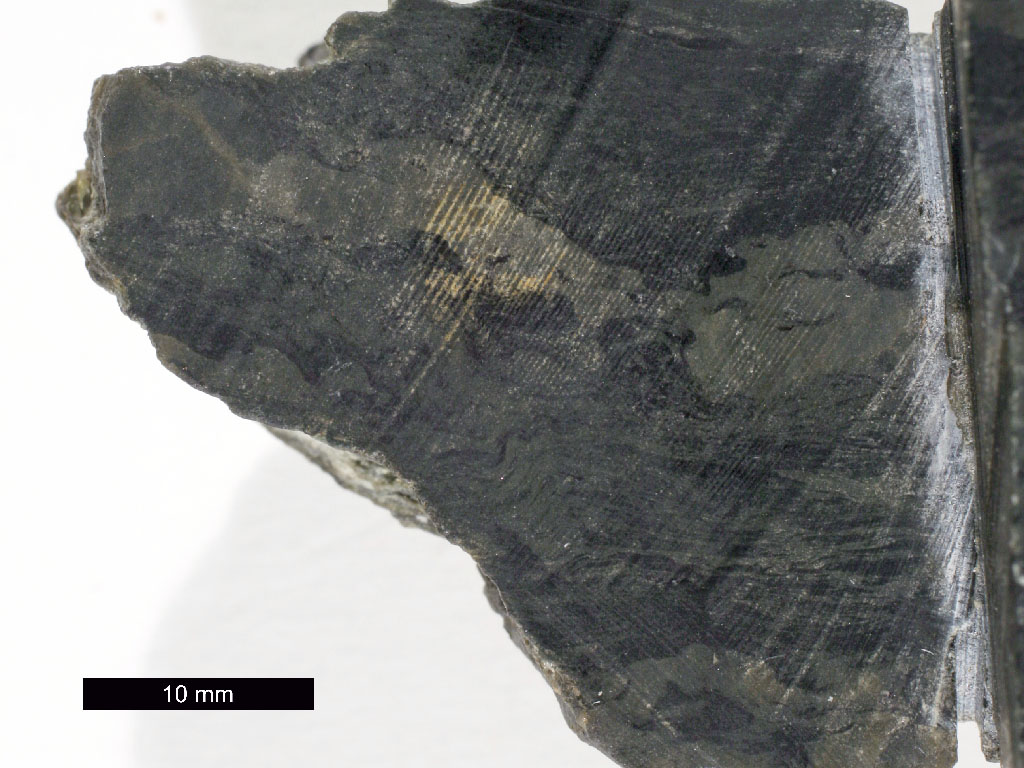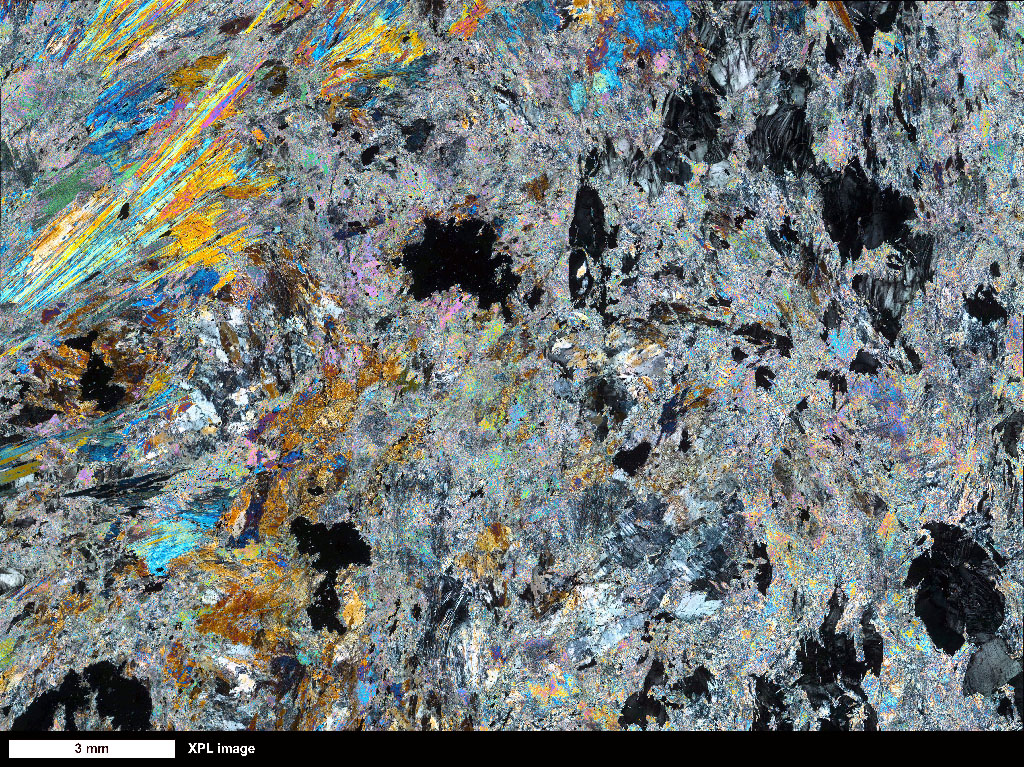It can be difficult to identify minerals in hand samples of metamorphosed ultramafic rocks, particularly at low grades, because of the fine grain size and lack of color contrast among the minerals. Even the relatively small percentage of iron in these rocks makes some of the minerals green to black in color. Nevetheless, it is a good idea to examine hand samples with thin sections to get a sense of the appearance of metamorphosed ultramafic rocks in the field. You can see a gallery of the contact metamorphosed serpentinite ("cmSerpentinite") hand samples by clicking this button:
Most of the minerals you can observe in the thin sections of these contact aureole rocks have reasonably distinctive optical properties relative to one another.
- anthophyllite (Ath): colorless-pale green, low second order retardation, intermediate relief, prismatic crystals
- antigorite (Atg): colorless, first order retardation, low relief, sheet silicate texture
- diopside (Di): colorless-faint green, second order retardation, intermediate relief, stubby prismatic crystals
- enstatite (En): colorless, upper first order retardation, high relief, stubby anhedral crystals
- forsterite (Fo): colorless, upper second order retardation, high relief, anhedral crystals
- talc (Tlc): colorless, third order retardation, low relief, sheet silicate textures
- tremolite (Tr): colorless, low to mid second order retardation, intermediate relief, prismatic crystals
Click here when you are ready to name the mineral assemblage for each sample:

